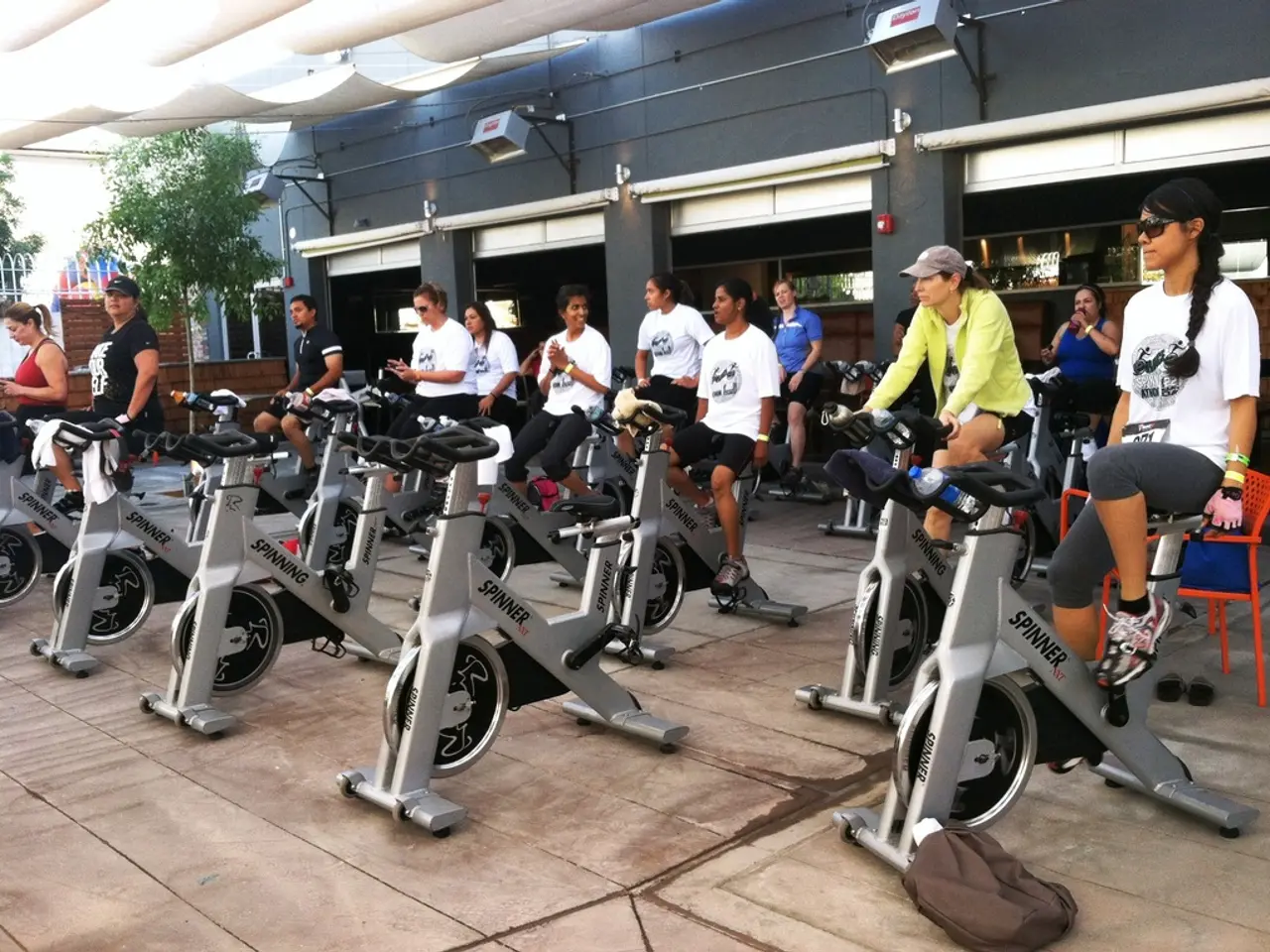Inquiries about one's sedentary habits: Are you often stationary?
In today's sedentary world, it's more important than ever to prioritise physical activity. The World Health Organization (WHO) recommends that adults engage in at least 150 minutes of moderate-intensity physical activity per week, or alternatively, at least 75 minutes of high-intensity activity.
One of the key challenges in maintaining an active lifestyle is overcoming procrastination. Visualising the positive feelings after a short run or walk can help motivate oneself for exercise, making it easier to get started. Small, manageable movement opportunities throughout the day can also contribute significantly to your overall activity levels. Climbing stairs with variation, stretching in doorways, and short balance exercises, often referred to as "movement snacks", can all help increase daily activity.
Incorporating physical activity into daily routines can be as simple as choosing active transport options. Walking or cycling to work, the supermarket, or meetings can be a great way to boost your daily movement. Parking a car further away or getting off public transportation early can also make a difference.
Multi-component interventions, combining behavioural, motivational, and educational components, have been shown to be most effective in boosting physical activity. Scheduling workouts as appointments, breaking exercise into short bursts, changing routine frequently, exercising with a partner or involving family members, using apps and guided workouts for motivation and tracking progress, and progressively increasing intensity or weights carefully, are all strategies that can help develop long-term exercise habits.
Every bit of movement is better than none, according to the WHO. Even modest increases in step count, such as 1000–1500 steps per day, can lead to significant reductions in mortality risk and cardiovascular events.
Remember, the WHO's recommendations are intended for adults. Activities like pumping up a bike tire or rolling out a yoga mat at home, or using stairs for a short workout at home, can all help facilitate regular exercise. Taking the stairs instead of the elevator or escalator strengthens thigh, calf, and buttock muscles.
Listening to an audiobook while walking or combining phone calls with a few steps of movement can also be motivators for physical activity. Making sports activities into habits at the same time and place can help build regular exercise.
Movement not only helps reduce the risk of numerous diseases but also provides temporary relief from stress. So, let's make a commitment to incorporate physical activity into our daily lives and reap the benefits of a healthier, happier lifestyle.
[1] Tudor-Locke, C., Bassett Jr, D. R., Ainsworth, B. E., Leon, A. S., & Blair, S. N. (2011). Quantifying the benefits of incremental physical activity. Medicine and Science in Sports and Exercise, 43(8), 1381–1385.
[2] Warburton, D. E., Nicol, C. W., & Bredin, S. S. (2006). How much physical activity is enough? Applying the Canadian guidelines for children and youth to adults. Canadian Journal of Public Health, 97(6), 369–374.
[3] Ainsworth, B. E., Haskell, W. L., Herrmann, S. D., Meckes, N., Bassett Jr, D. R., Tudor-Locke, C., ... & Leon, A. S. (2011). 2011 Compendium of physical activities: a second update of codes and MET values. Medicine and Science in Sports and Exercise, 43(8), 1575–1581.
[4] Warburton, D. E., Bredin, S. S., & Cammi, P. (2016). Promoting physical activity for public health: a global perspective. European Journal of Public Health, 26(1), 11–15.
[5] American College of Sports Medicine (2018). ACSM's guidelines for exercise testing and prescription. Lippincott Williams & Wilkins.
- To resist the sedentary lifestyle, visualizing the positive feelings from sports activities like running or walking can help overcome procrastination and boost motivation for fitness and exercise.
- Adopting healthy-diets is crucial, but pairing a healthy-diet with regular physical activity, such as those recommended by the World Health Organization, can lead to significant reductions in the risk of mortality and cardiovascular events.
- Incorporating science-based principles like using apps for motivation, scheduling workouts as appointments, and gradually increasing intensity or weights, can help establish long-term exercise habits and contribute to a healthier, happier lifestyle through health-and-wellness and fitness-and-exercise.




